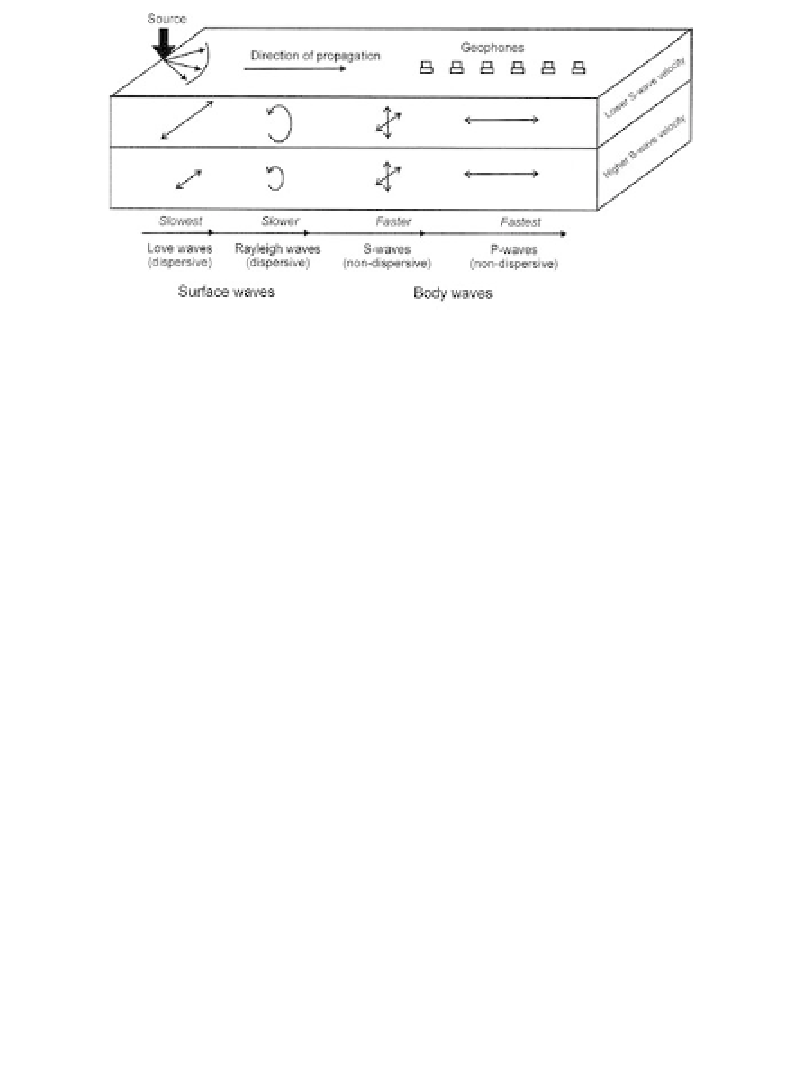Geology Reference
In-Depth Information
Figure 14.1
Body and surface seismic waves generated by an impact or
vibratory source and received by an array of geophones. The directions of
particle motion in the ground are shown, in simplified form, by the arrowed
lines. The relative ordering of transmission velocities is also indicated.
Love and Rayleigh waves are dispersive, i.e. components with different
frequencies travel at different velocities. The presence of the interface at
which velocity increases is essential for the generation of Love waves.
10% across a range of materials. Shear wave velocities (see Table 14.1) are
in turn related to the maximum shear modulus or stiffness by the formula:
V
s
=
√
(
G
max
/ρ
)
G
max
replaces
µ
in this version of the formula originally quoted in Section
11.1.2, to emphasise its role as the upper bound for the bulk stiffness
Table 14.1
Typical shear-wave velocities
for some common geological materials
Material
Shear-wave velocity (m s
-1
)
Soft muds
<
200
Dry sand
300-600
Wet sand
700-900
Clays
500-800
Tills
1000-1200
Sandstone
1600-2600
Shale
2200-2400
Limestone
2500-3100
Granite
3200-3800
Basalt
3400-4000



